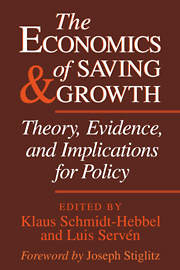5 - Foreign Resource Inflows, Saving, and Growth
Published online by Cambridge University Press: 18 December 2009
Summary
This chapter surveys aspects of the empirical and theoretical debate over the effects of foreign resource inflows on national saving, investment, and growth. The debate originated in the early 1960s in attempts to assess the role of capital inflows in development. But elements of the debate go back much further. Indeed, the classical controversy over the international transfer mechanism, initiated by Keynes and Ohlin in the 1920s, revolves implicitly around the related question: does a transfer raise the recipient's saving more or less than its investment, and by what amount? For it is the resulting incipient imbalance in the current account that drives the terms-of-trade effect of the transfer (Mundell, 1968, pp. 17–21).
A salient problem in the existing literature is a failure to define clearly the question being asked. Generally researchers have sought to discover, through cross-sectional multicountry regressions, the statistical relationship between additional foreign resource availability and saving, investment, consumption, and/or the growth rate of GDP. But the resulting numerical estimates of correlation need not correspond to the effects of any well-defined economic policy. The impact of outright aid differs from that of a loan at market interest rates. Furthermore, market borrowing, an important source of developing-country finance, responds endogenously to factors that simultaneously shift other macroeconomic variables. Accordingly, a cross-sectional regression of saving, say, on capital inflows, generally cannot disclose the causal impact of those inflows on saving.
- Type
- Chapter
- Information
- The Economics of Saving and GrowthTheory, Evidence, and Implications for Policy, pp. 107 - 146Publisher: Cambridge University PressPrint publication year: 1999
- 15
- Cited by

